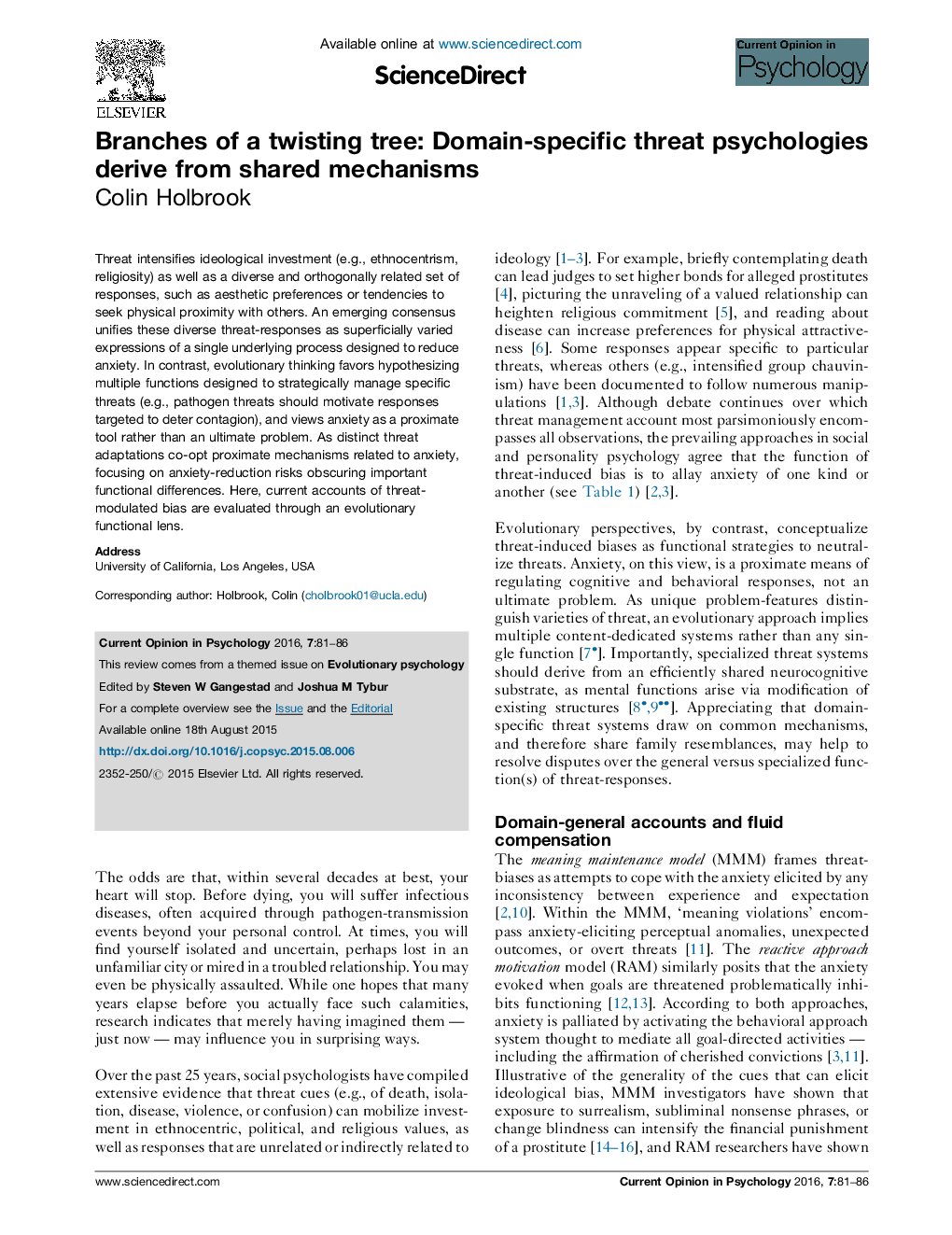| Article ID | Journal | Published Year | Pages | File Type |
|---|---|---|---|---|
| 879360 | Current Opinion in Psychology | 2016 | 6 Pages |
•Threats influence various responses (e.g., ethnocentrism, risk-taking, eating).•Diverse threat-responses are posited to serve one broad function: anxiety-reduction.•However, anxiety processes are proximate means to achieve behavioral ends.•Distinct threat systems derive from highly co-opted neurocognitive mechanisms.•Distinct threat systems appear to modulate responses to achieve domain-specific ends.
Threat intensifies ideological investment (e.g., ethnocentrism, religiosity) as well as a diverse and orthogonally related set of responses, such as aesthetic preferences or tendencies to seek physical proximity with others. An emerging consensus unifies these diverse threat-responses as superficially varied expressions of a single underlying process designed to reduce anxiety. In contrast, evolutionary thinking favors hypothesizing multiple functions designed to strategically manage specific threats (e.g., pathogen threats should motivate responses targeted to deter contagion), and views anxiety as a proximate tool rather than an ultimate problem. As distinct threat adaptations co-opt proximate mechanisms related to anxiety, focusing on anxiety-reduction risks obscuring important functional differences. Here, current accounts of threat-modulated bias are evaluated through an evolutionary functional lens.
